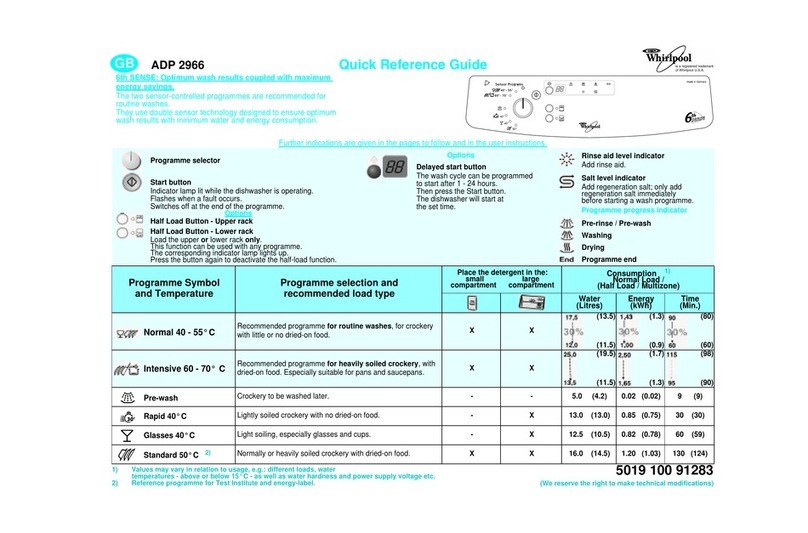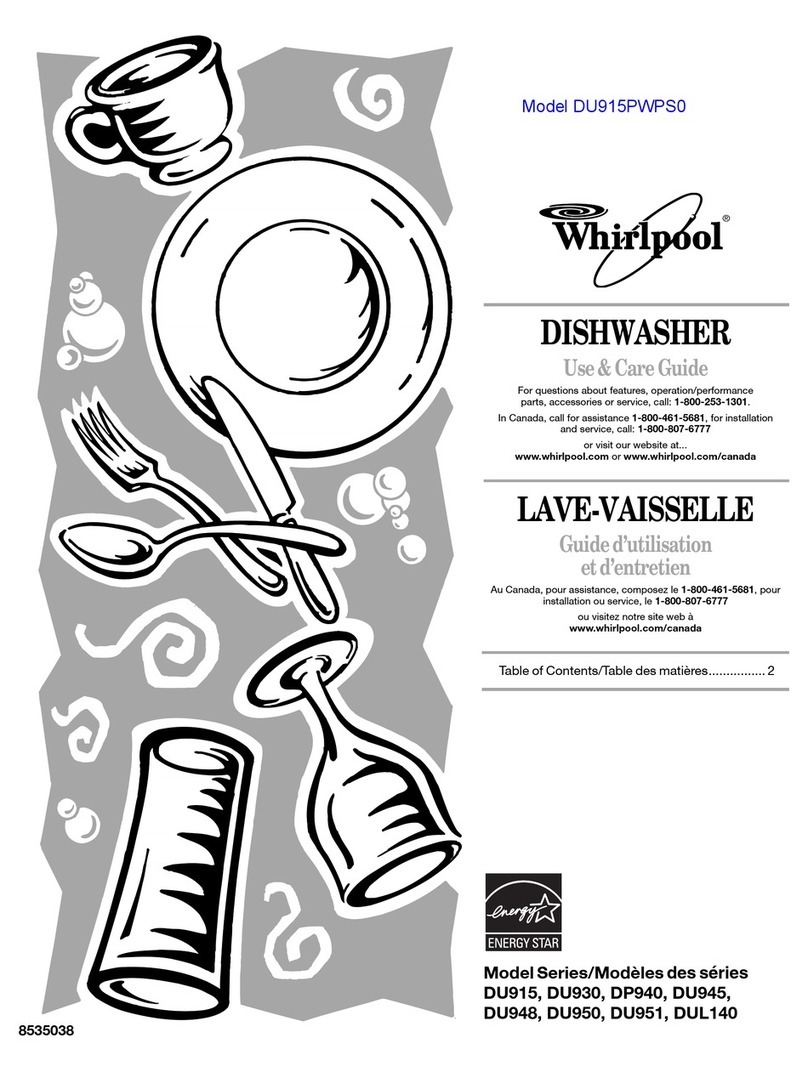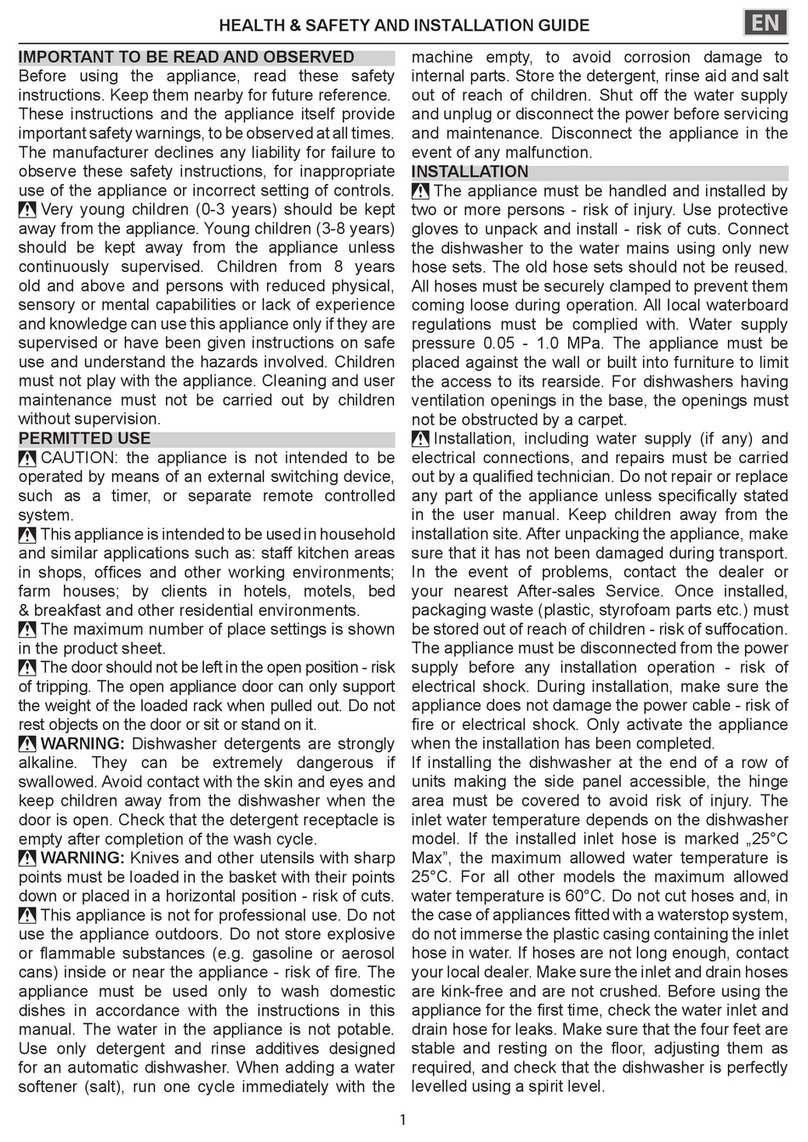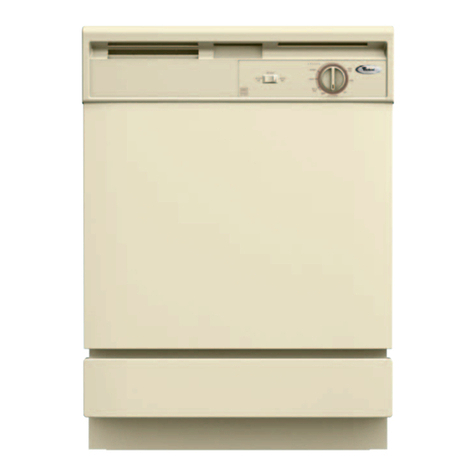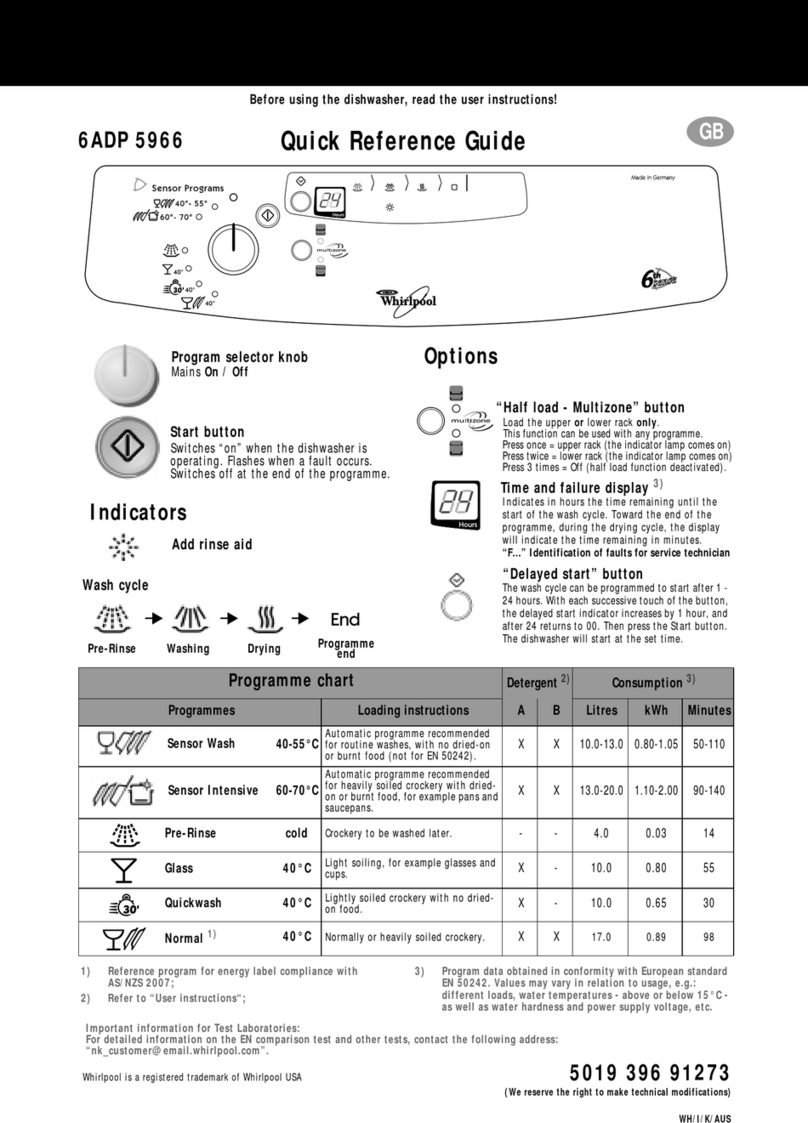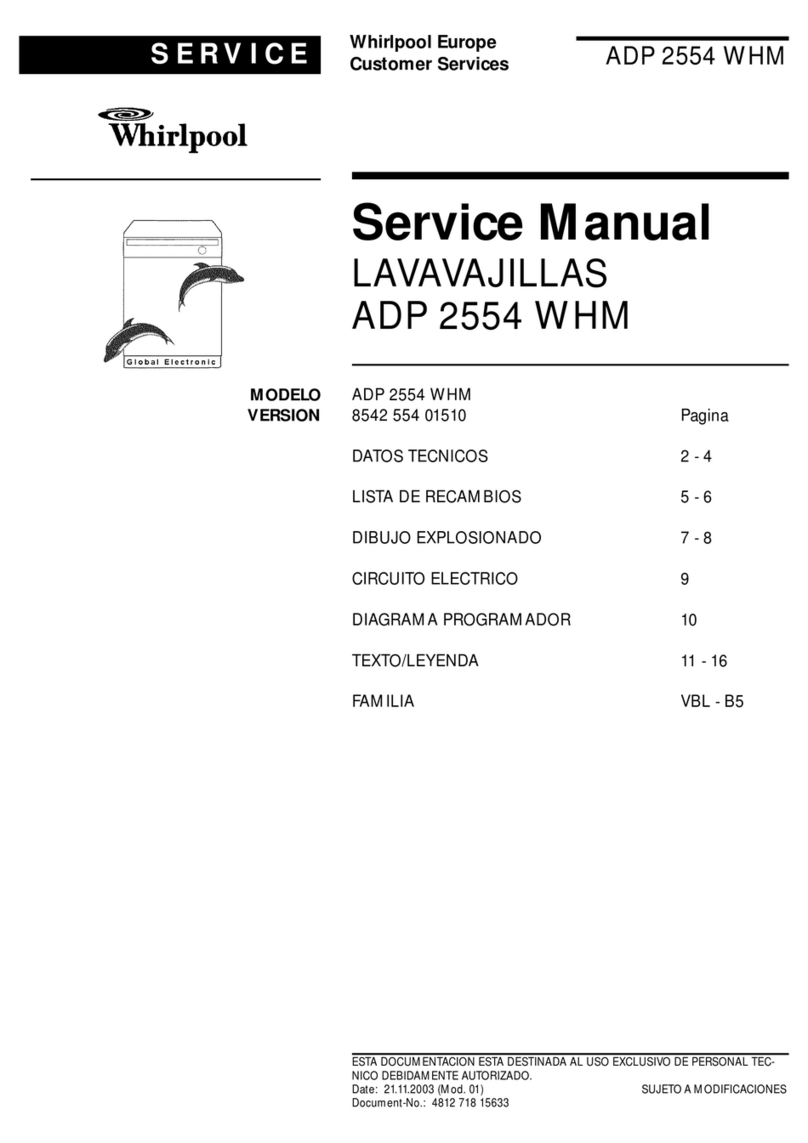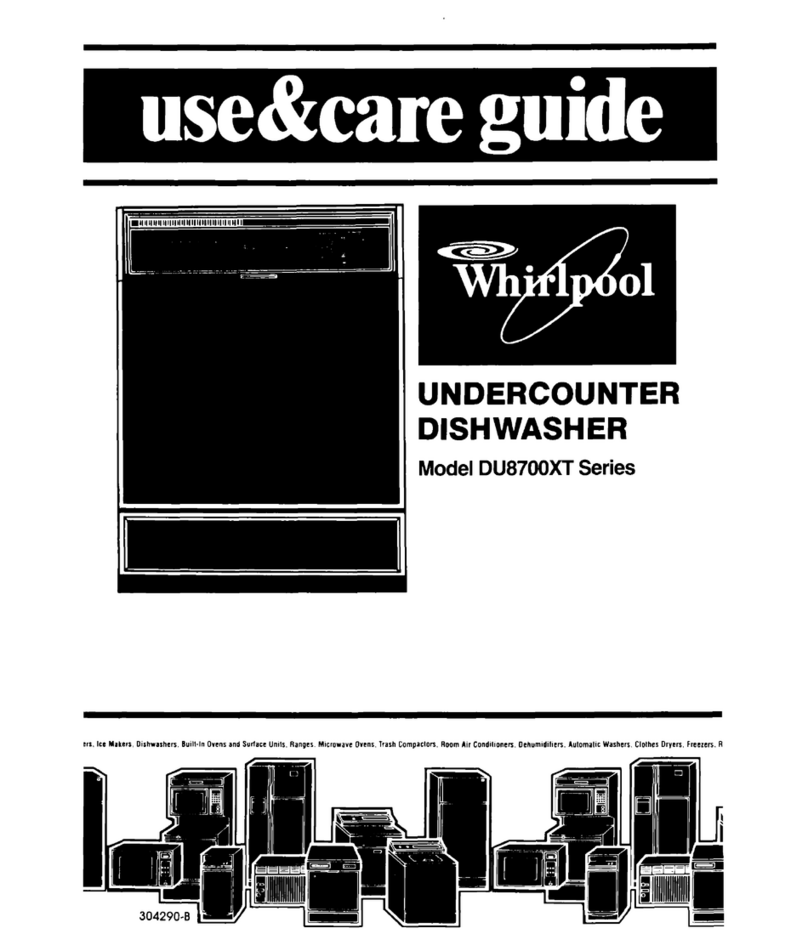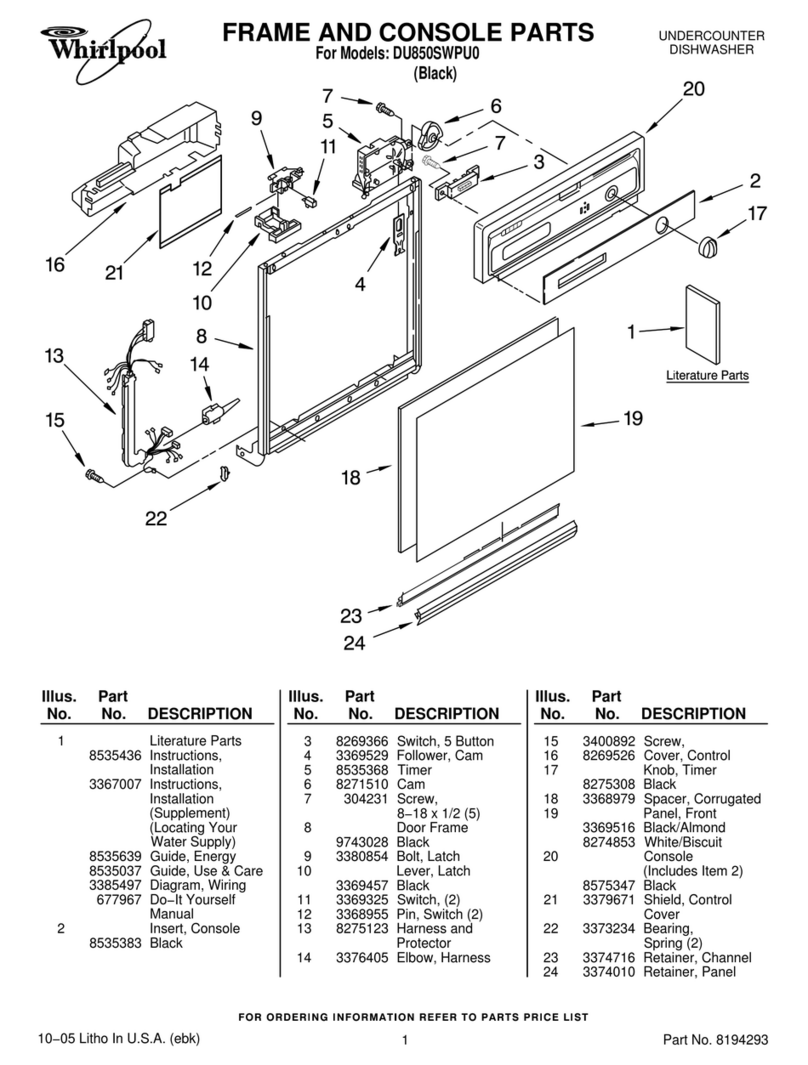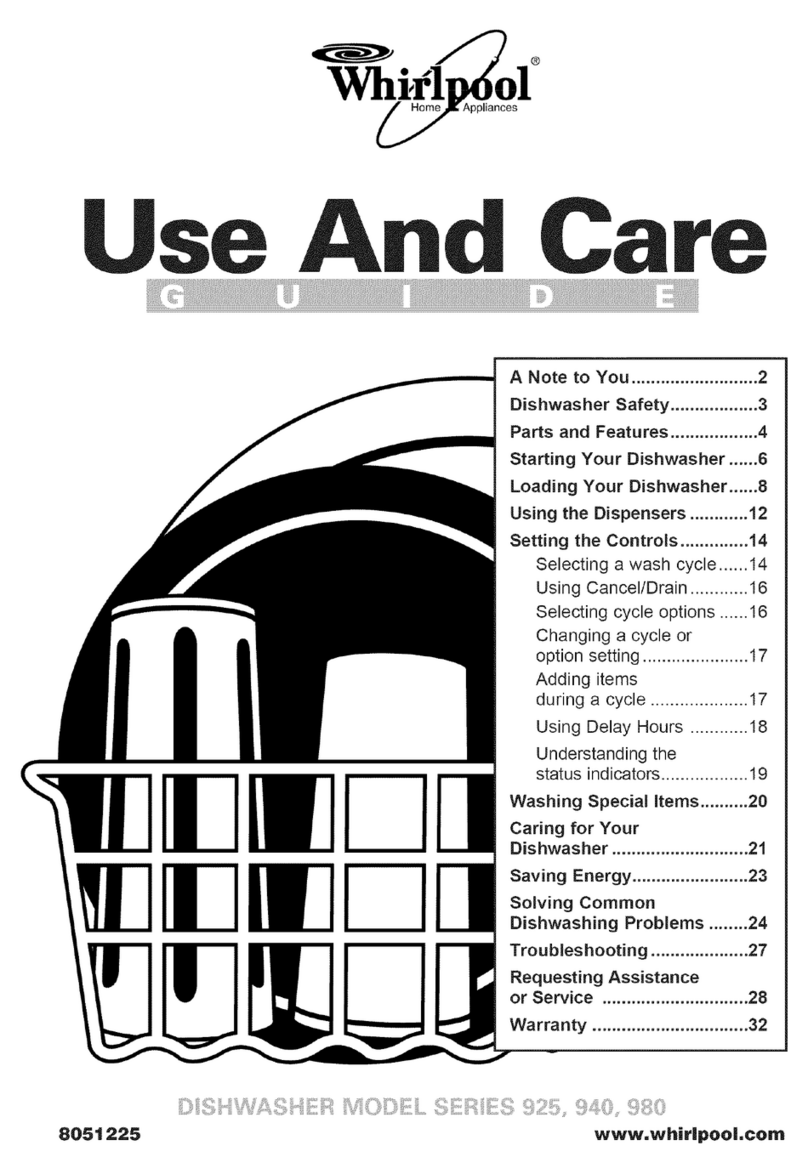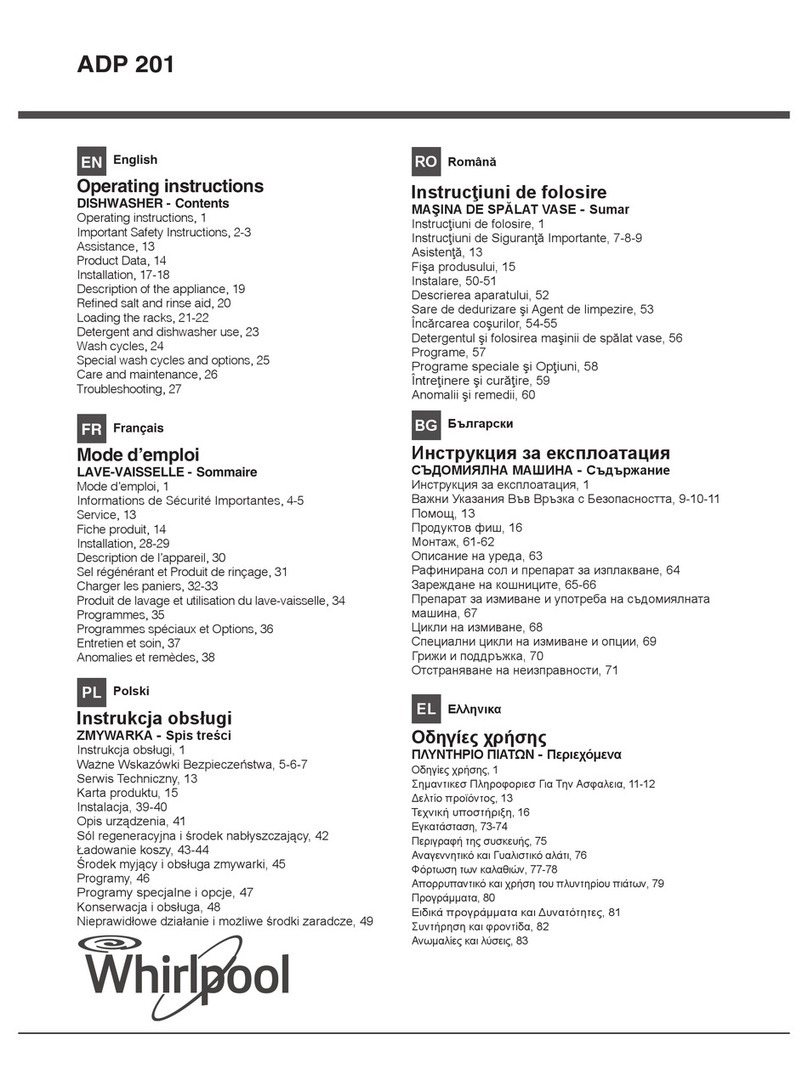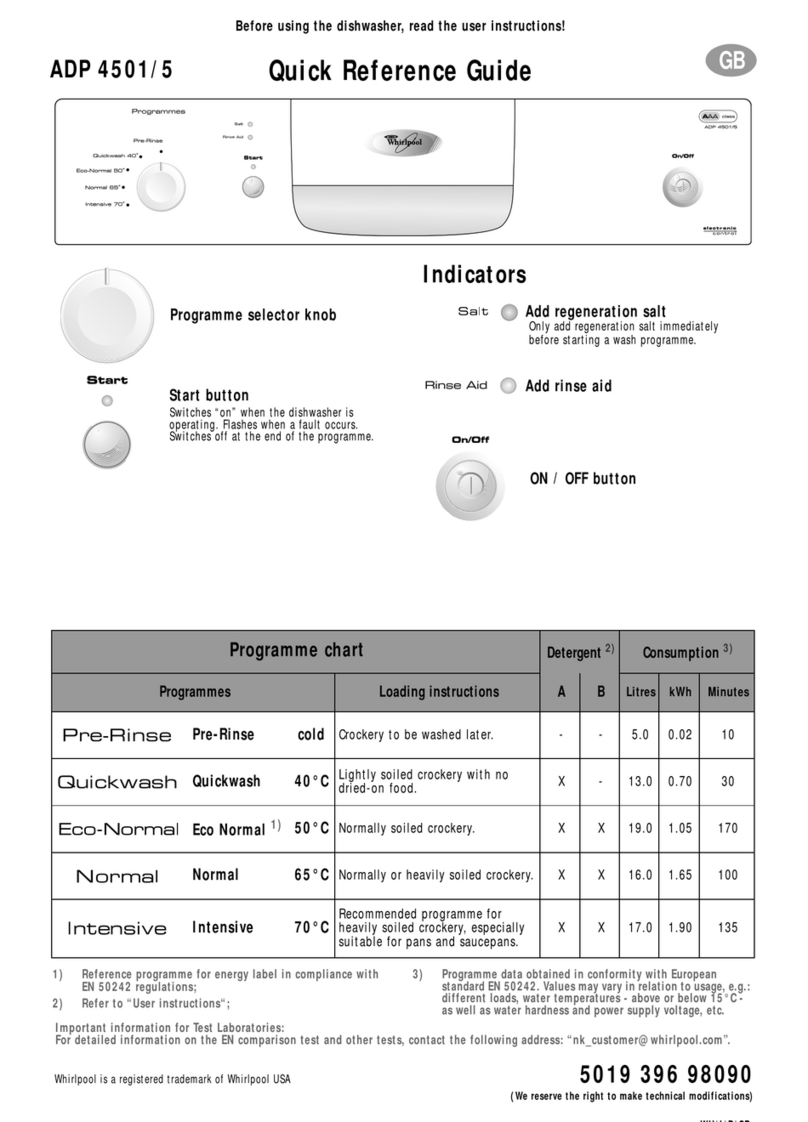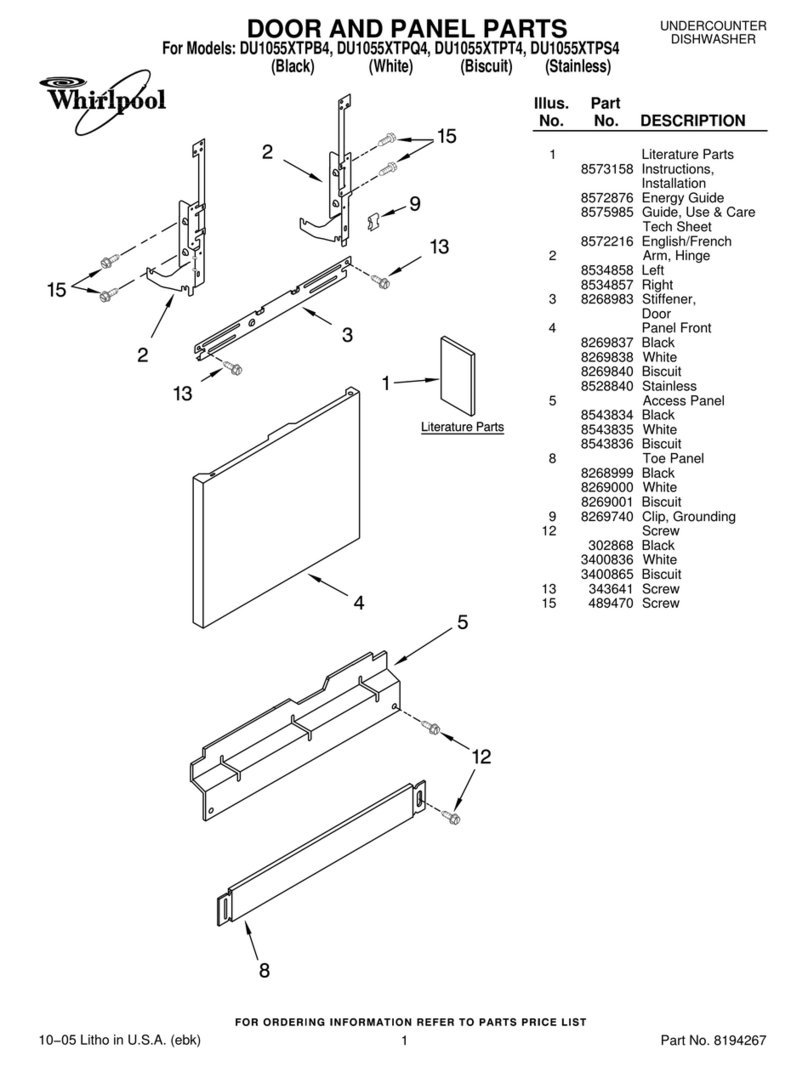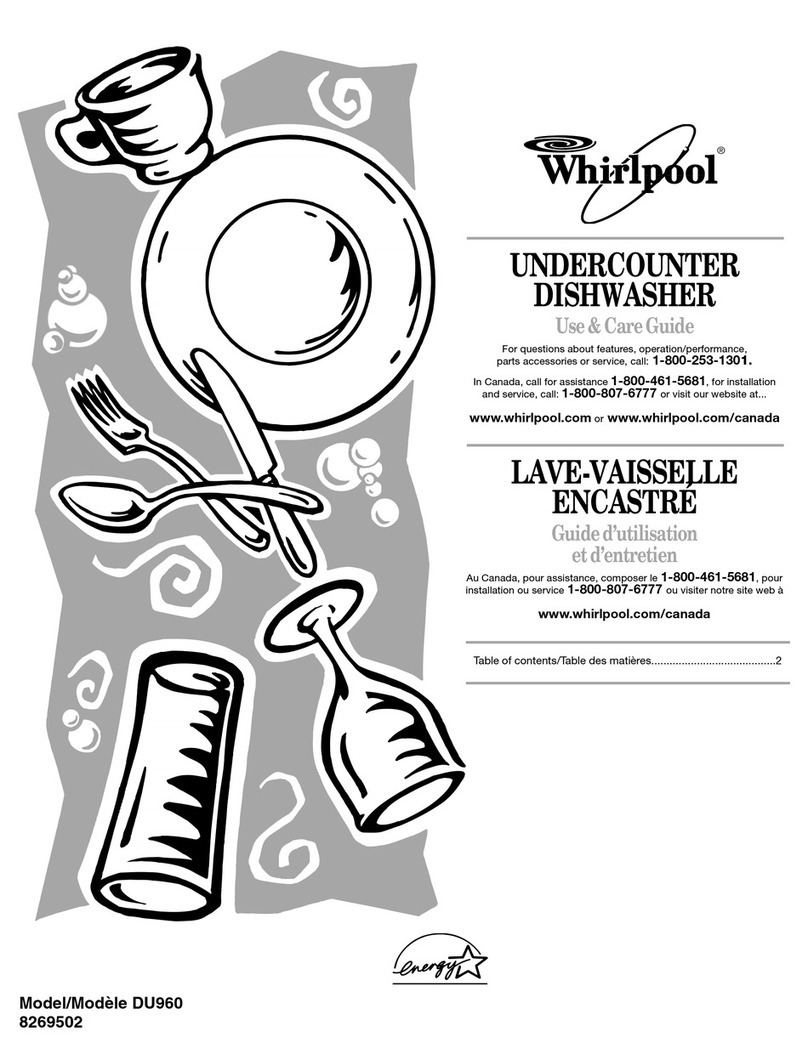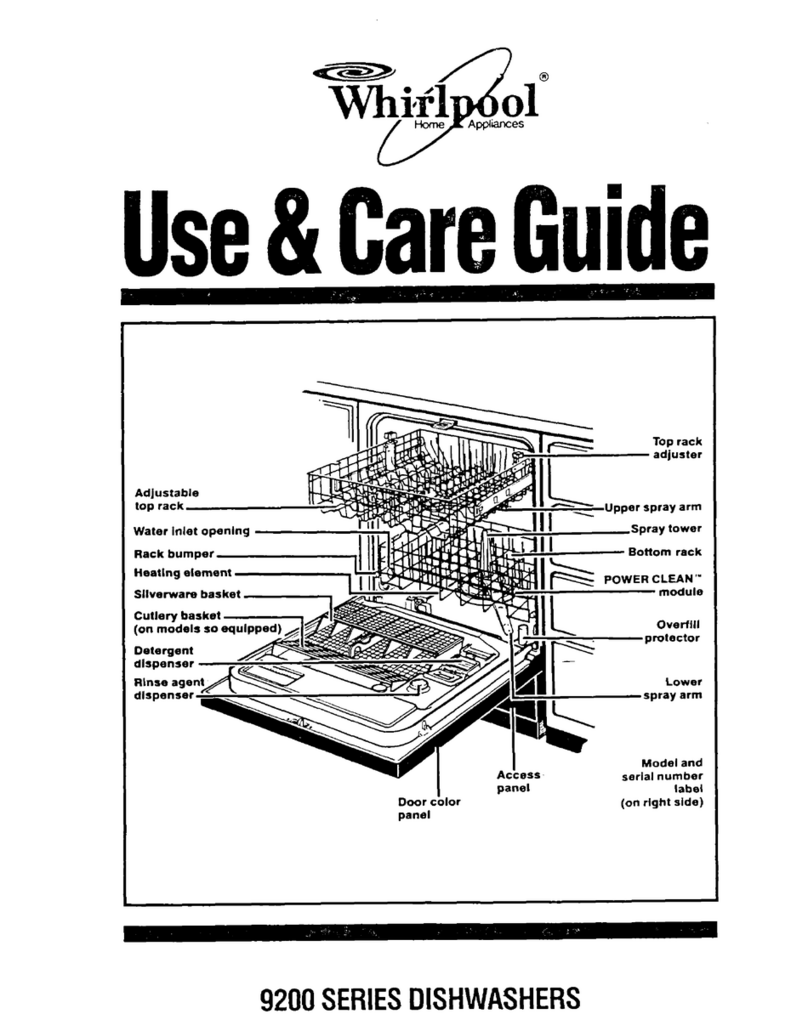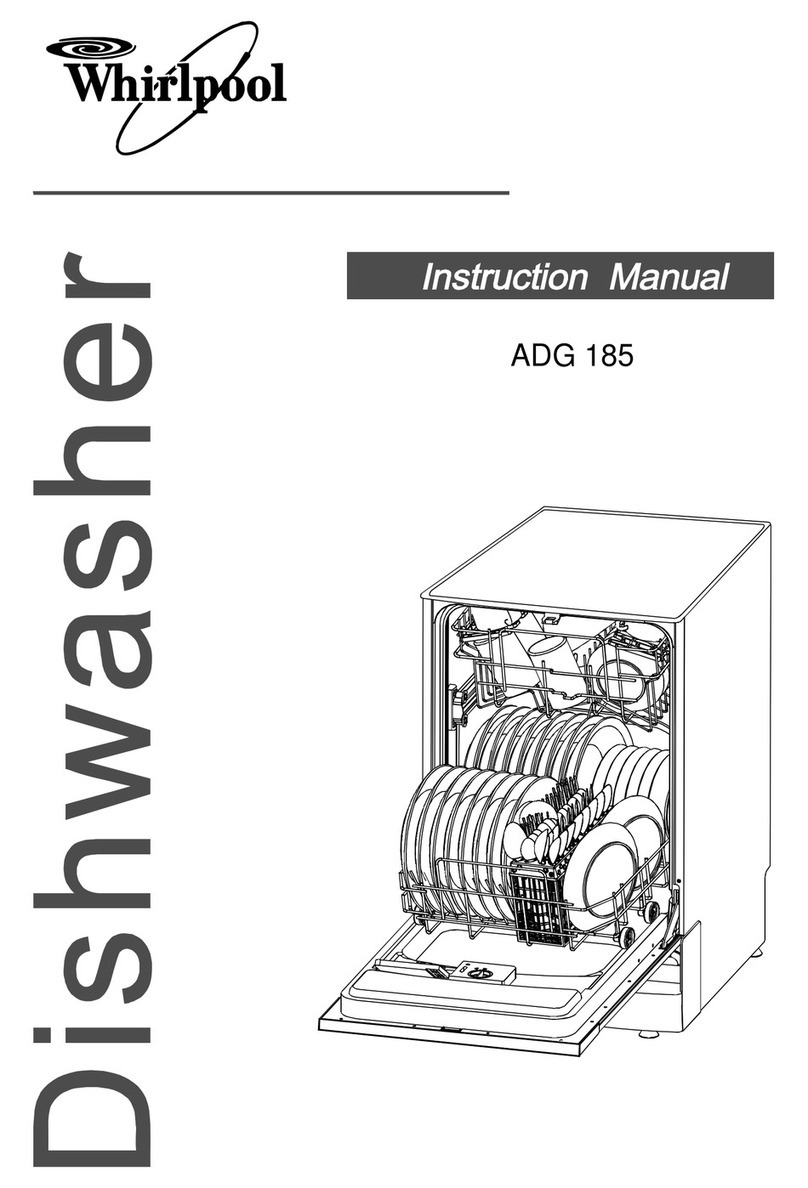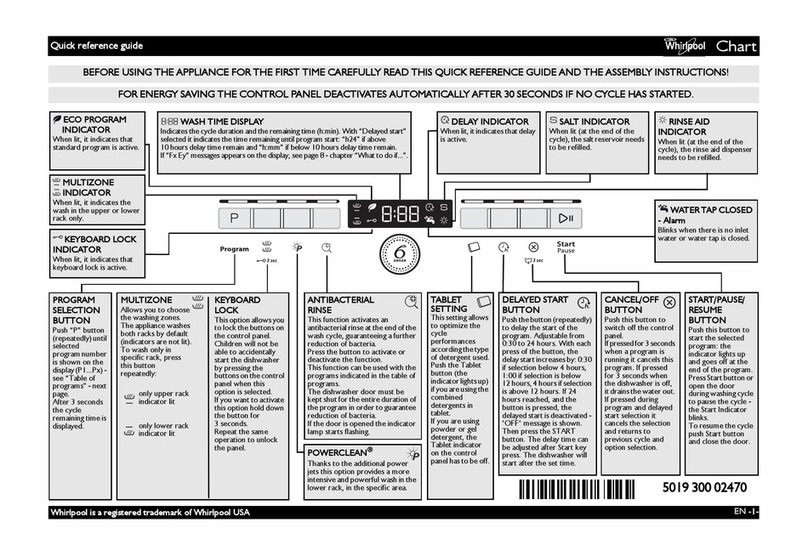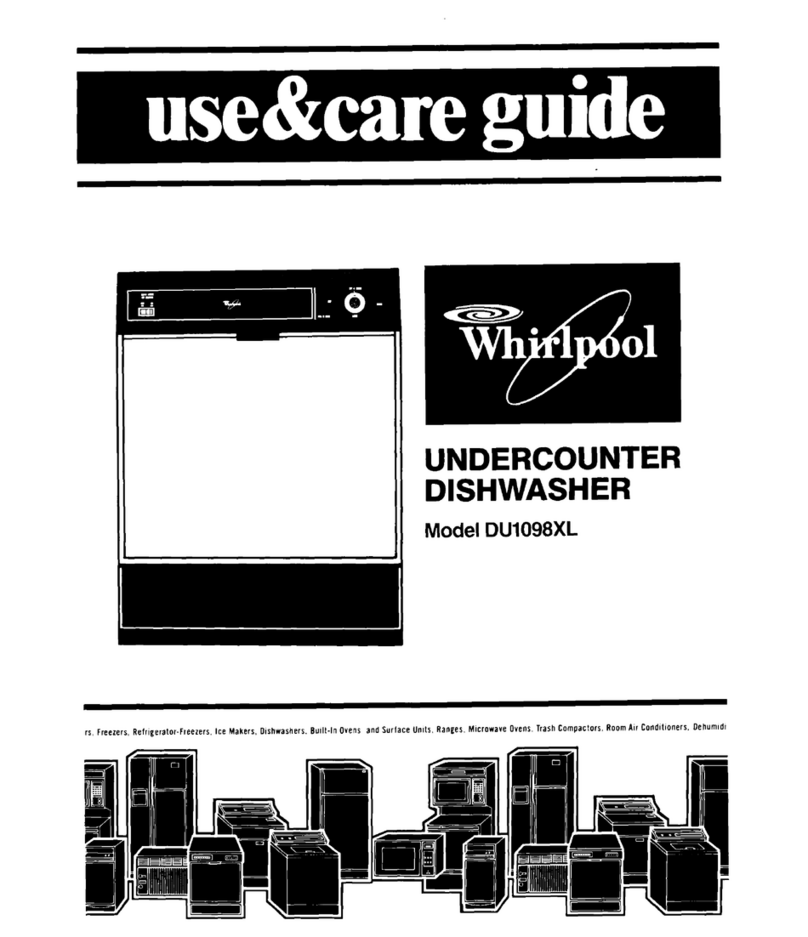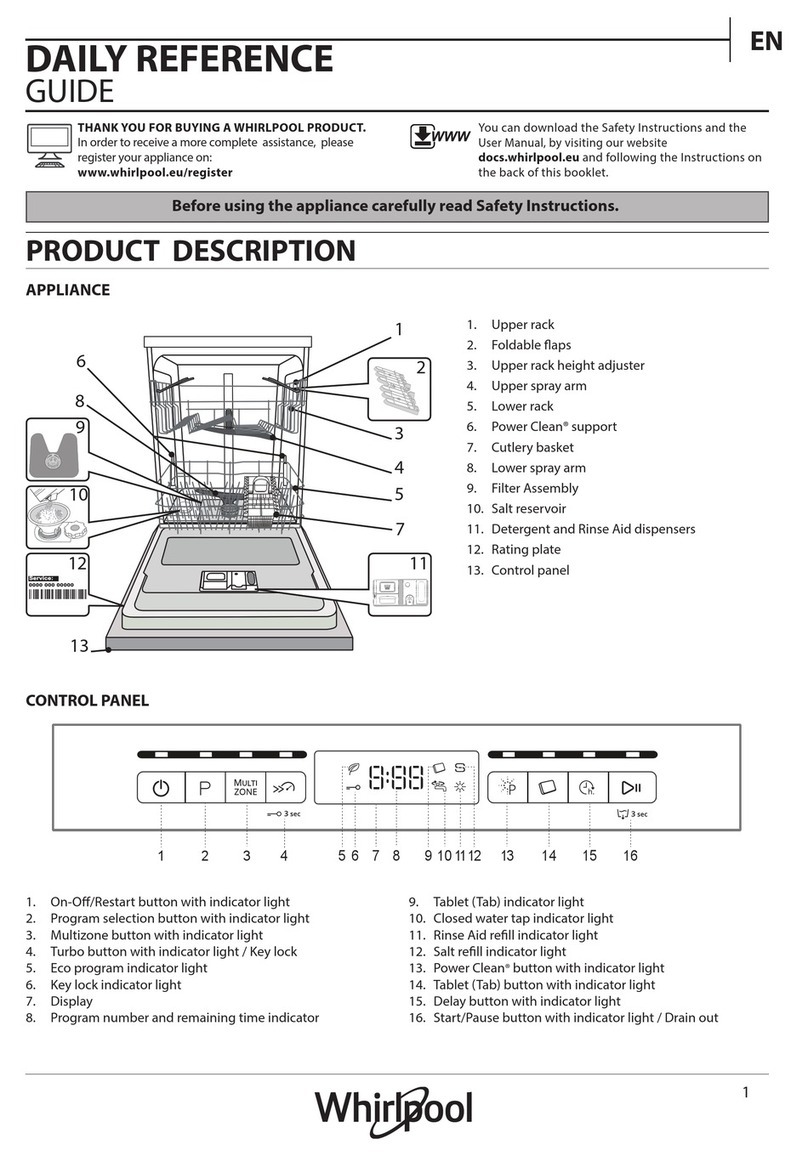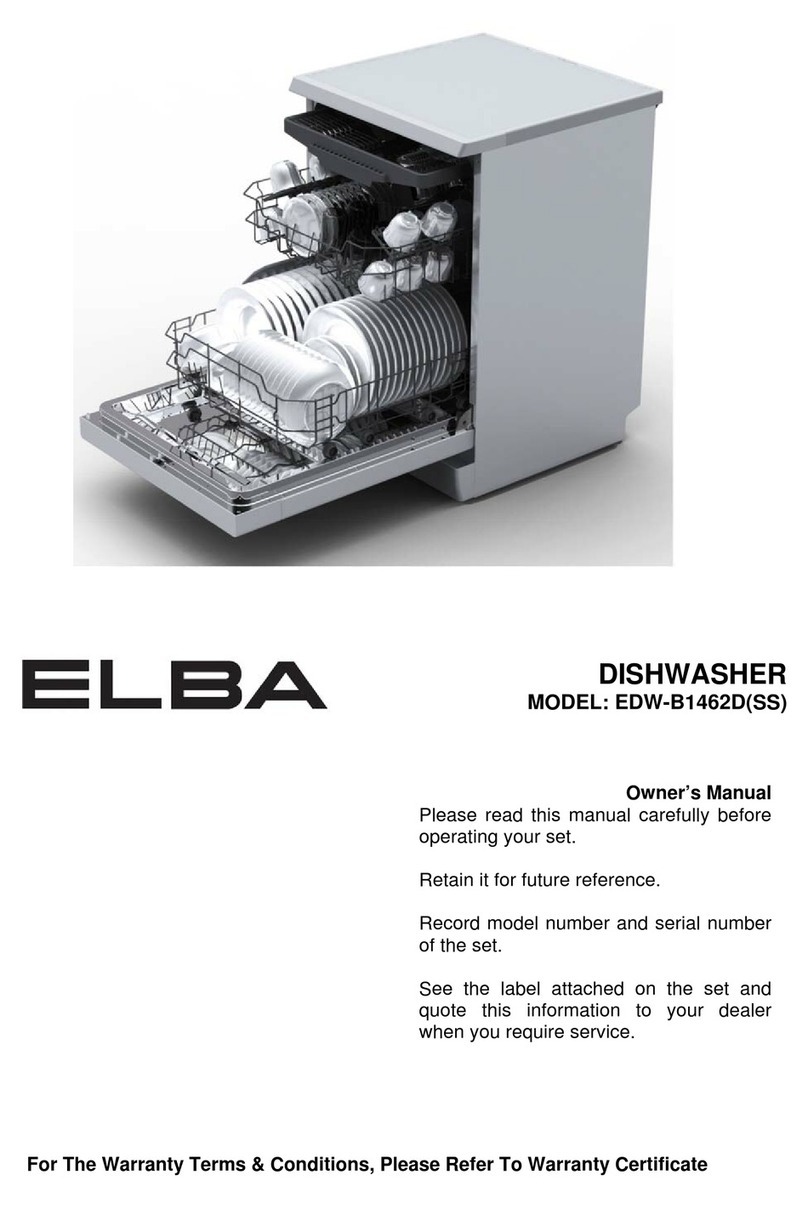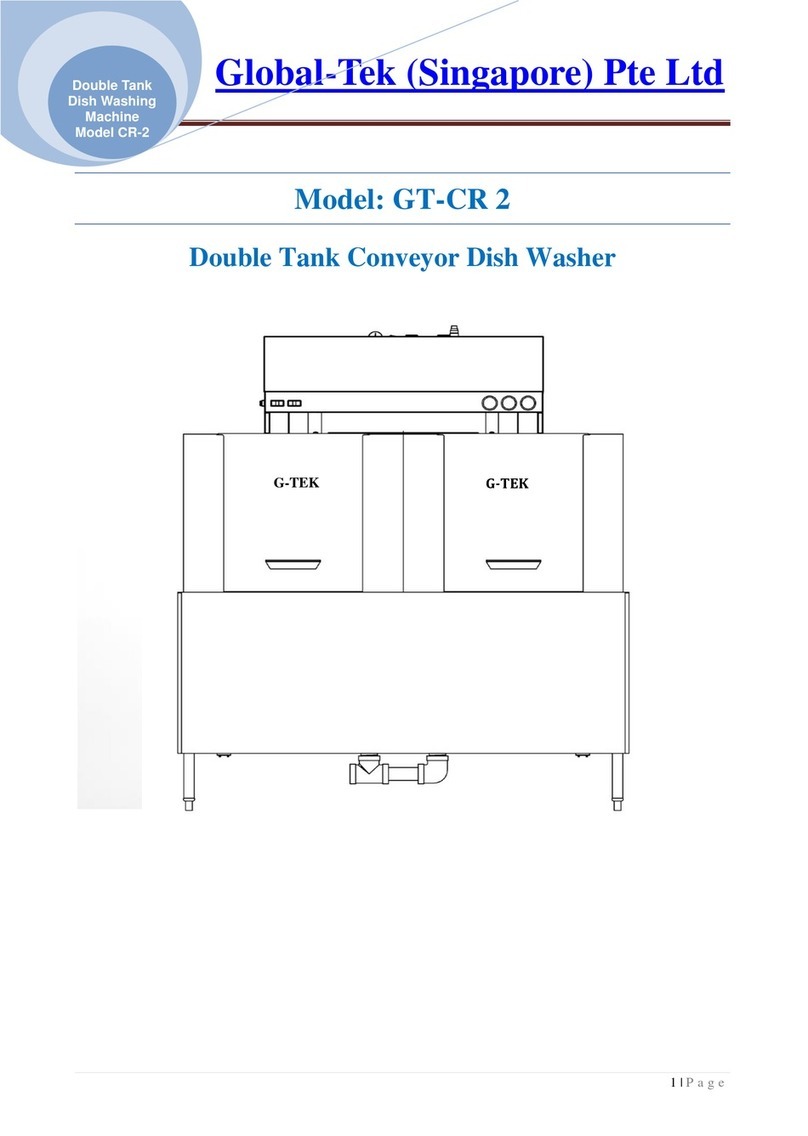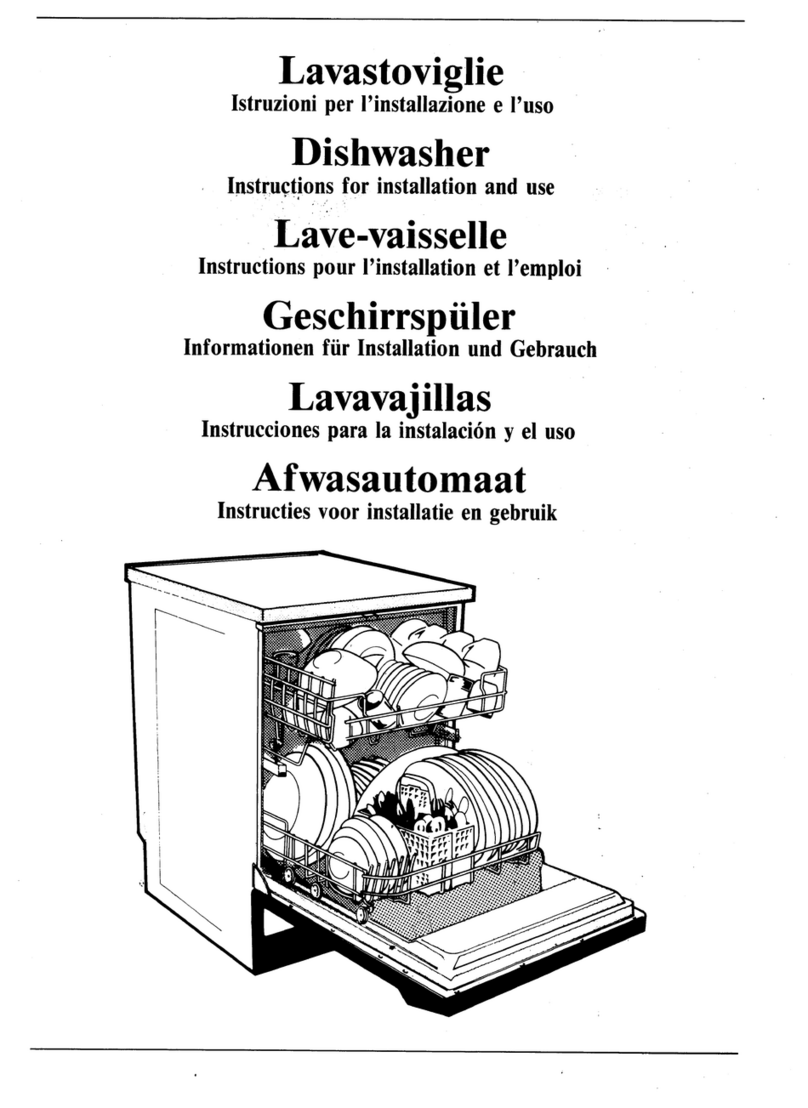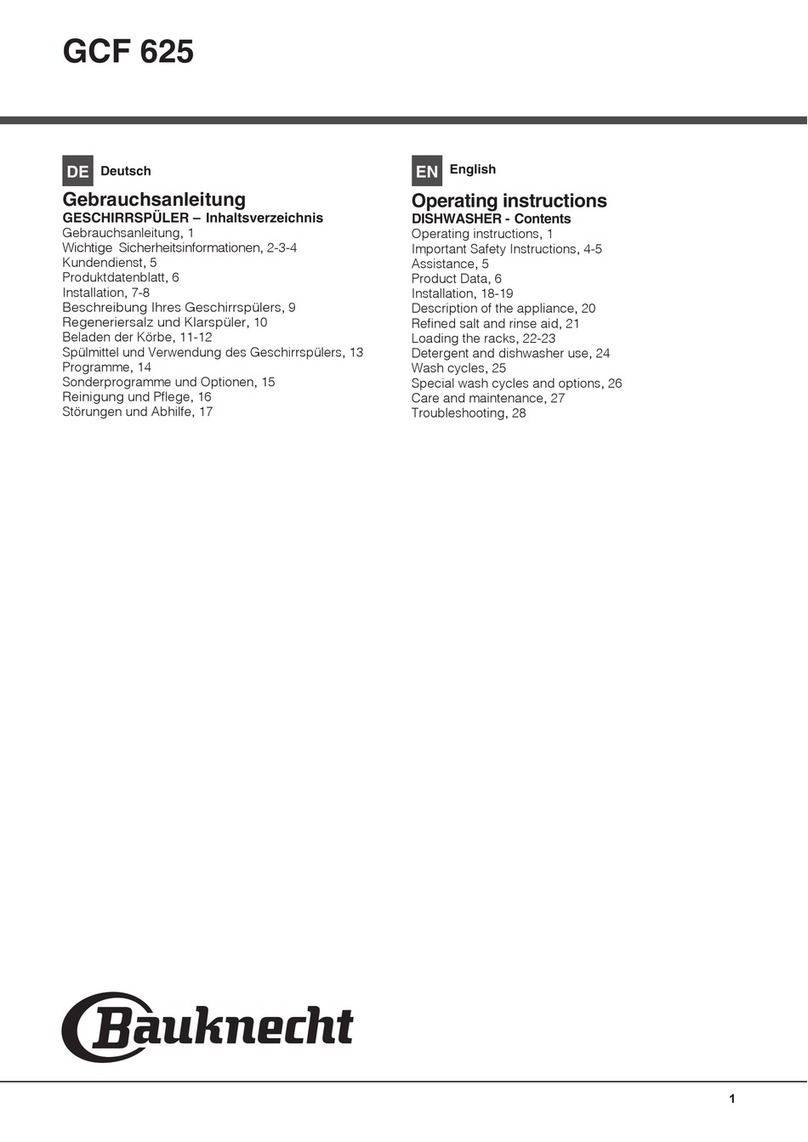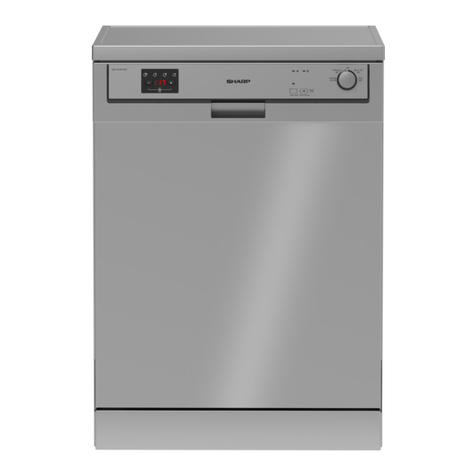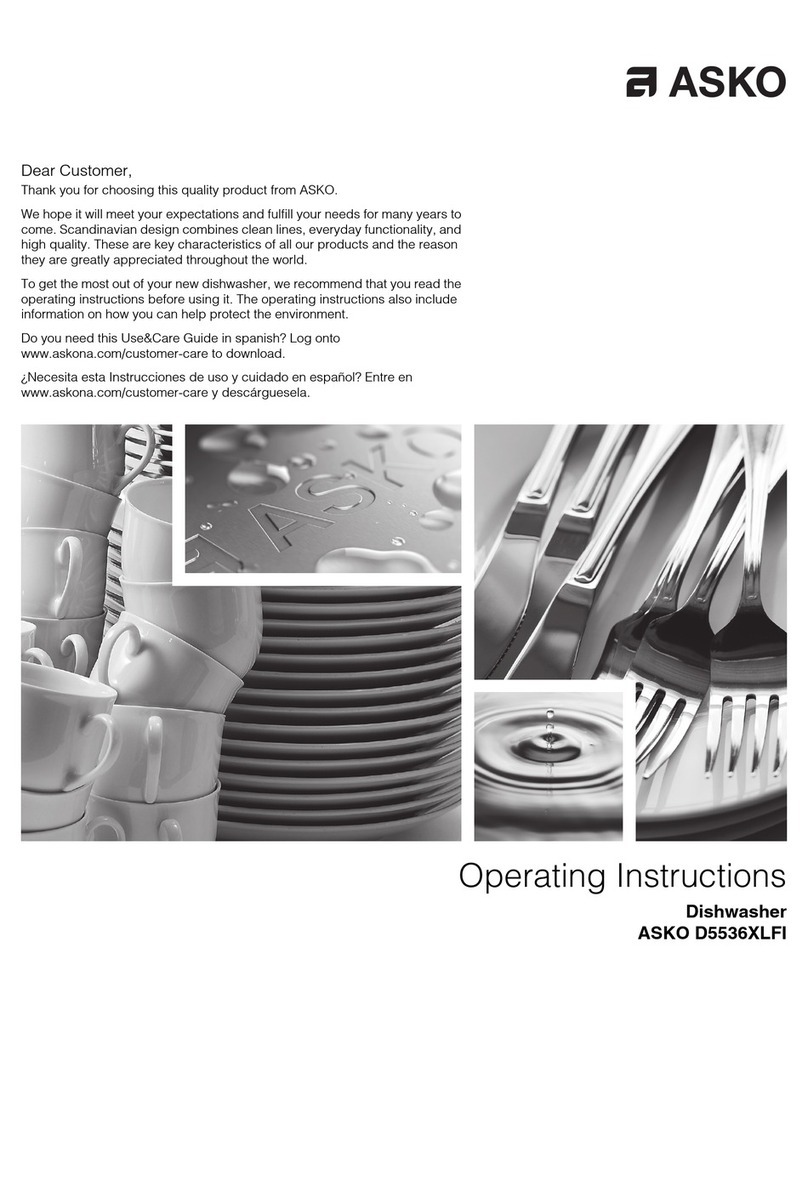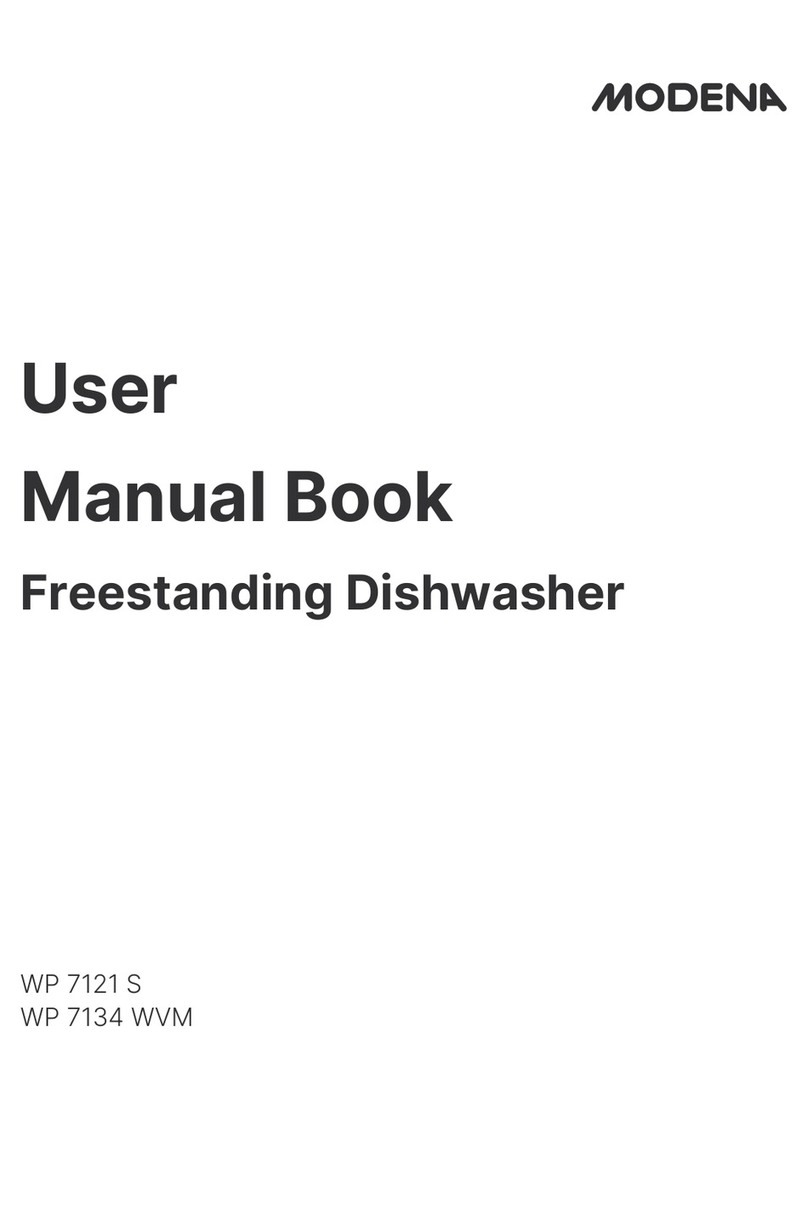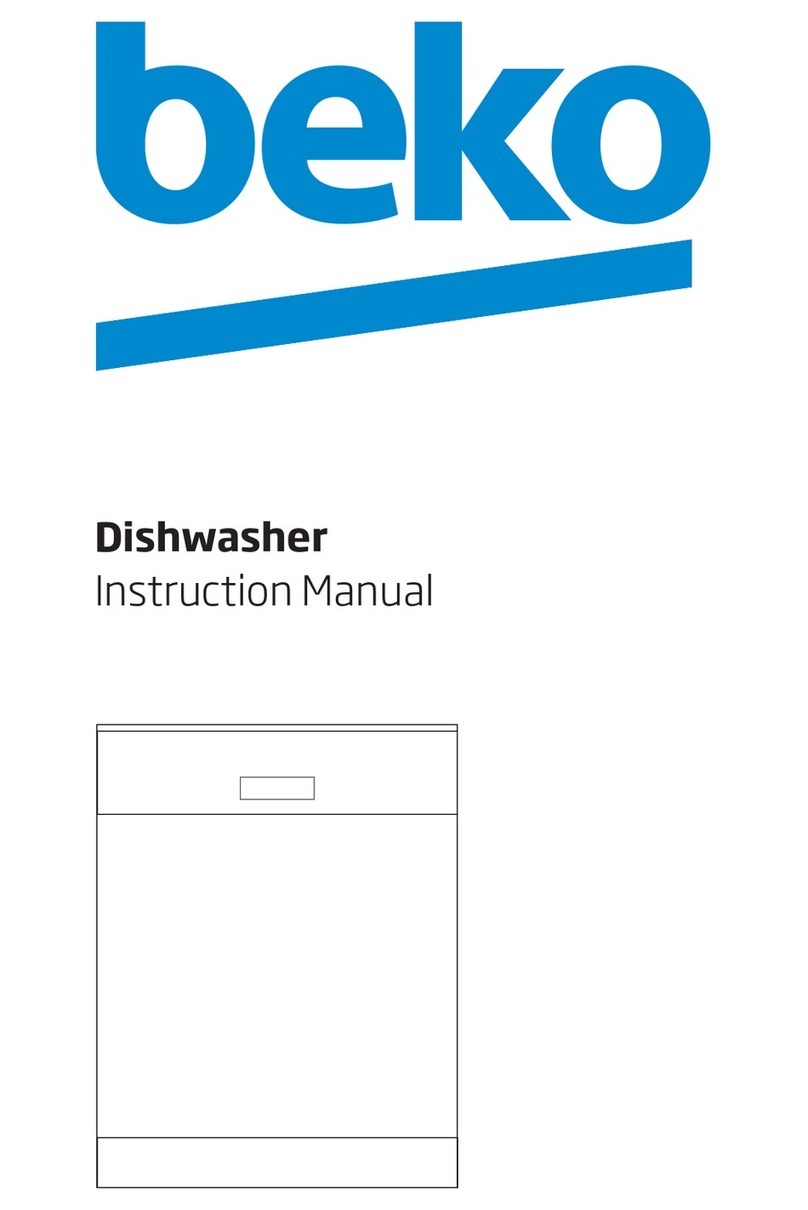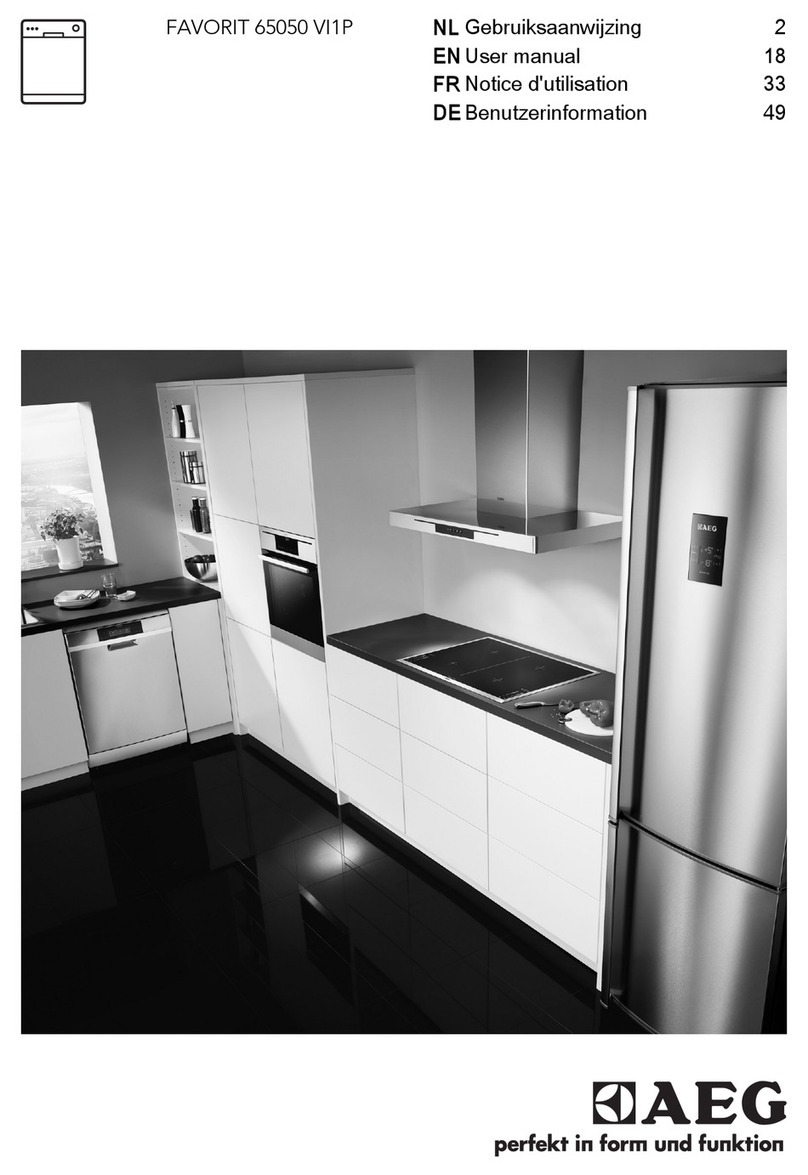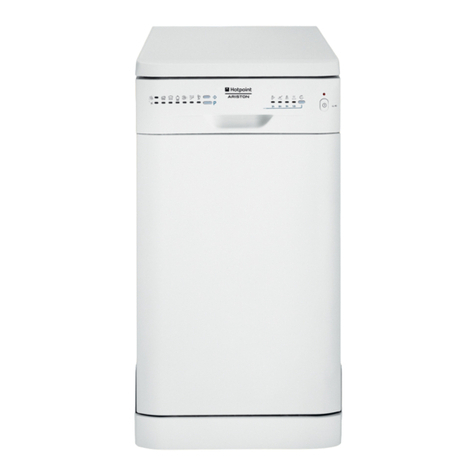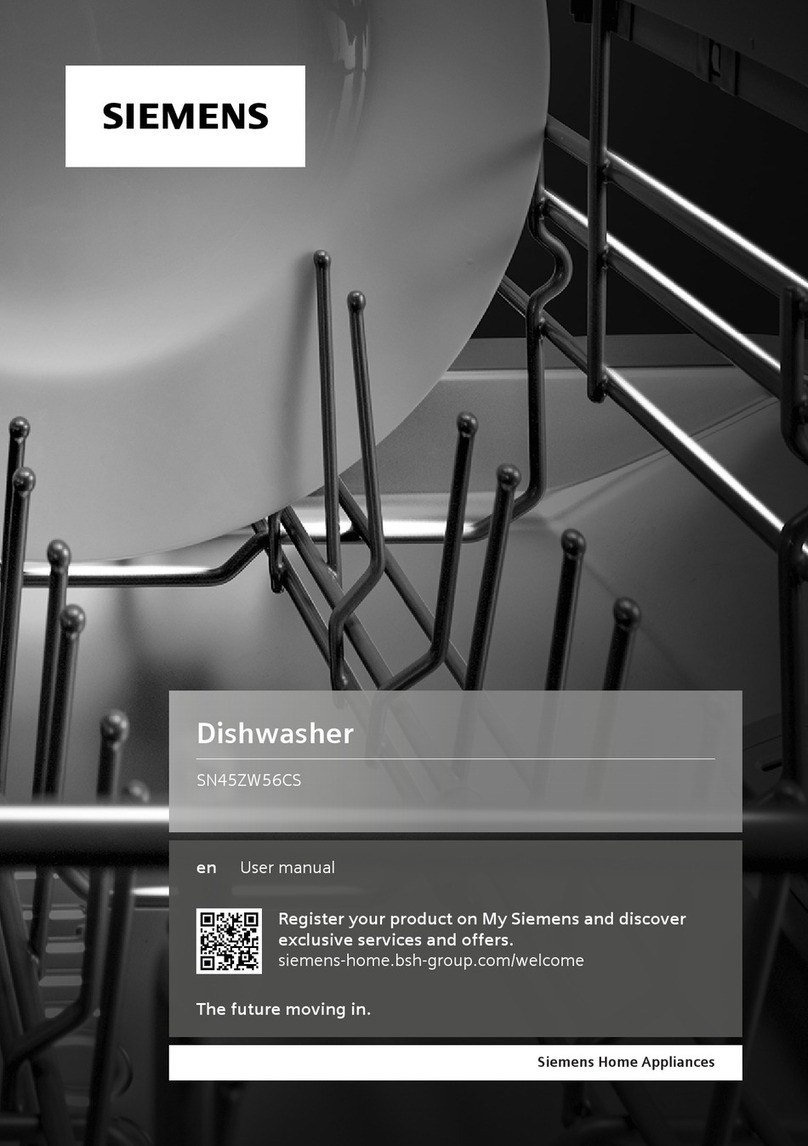Contents
BEFORE YOU USE YOUR DISHWASHER
IMPORTANT SAFETY INSTRUCTIONS..
PARTS AND FEATURES..
FOR BEST RESULTS
The Filtering System
Water Must Be Hot
Quiet Operating Tips
PROPER LOADING
Top Rack Loading
Bottom Rack Loading
Silverware Basket Loading
ADDING DETERGENT.,
The Detergent Dispenser..
How Much Detergent to Use
Page
BEFORE STARTING YOUR DISHWASHER. 8
STARTING YOUR DISHWASHER.. 8
Changing a Setting 8
Selecting a Cycle, 9
HEATDRYorAIRDRY? ,...,........... 9
To Add a Dish After Starting 9
ENERGY SAVING TIPS.. 10
SPECIAL TIPS 11
COMMON DISHWASHING PROBLEMS.. 12
CONNECTING YOUR PORTABLE
DISHWASHER., 14
IF YOU NEED SERVICE OR ASSISTANCE. 14
WHIRLPOOL DISHWASHER WARRANTY 16
01989 Whirlpool Corporation
Before you useyour dishwasher
It Is your responsibility to be sure your dishwasher:
l Has been located where it is protected from the elements.
l Has been properly connected to electricity, water and drain.
See Installation Instructions and page 14for complete information.
l Has had all hang tags and temporary labels removed.
i l Isnot used by children or anyone unable to operate it properly,
l Is properly maintained.
Important safety instructions
l Read all instructions before
using the
dishwasher.
. DISHWASHER MUST BE ELECTRICALLY
GROUNDED. See “Electrical Connection”
on page 14 for details.
l Be sure your dishwasher is located on a
level floor that will hold the weight, and in
an area suitable for its size and use.
l When discarding an old dishwasher, al-
ways remove the door to prevent acciden-
tal entrapment.
l REMEMBER,use your dishwasher only for the
job it was designed to do.
l Store dishwasher detergent in a cool, dry
place WHERECHILDREN CAN’T REACH IT.
l Use ONLY detergents and rinse aids recom-
mended for use in a dishwasher.
l Locate sharp items and knives so that they
are not likely to damage door seal or cut
the user.
l DO NOT let children play in or on the
dishwasher.
l DO NOT reach into the area below the bot-
tom
rack until the heating element has
cooled for at least 20 minutes.
l DO NOT wash plastic items unless marked
“Dishwasher Safe” or the equivalent. If not
marked, check manufacturer’s recom-
mendations.
l DO NOT use your dishwasher unless all en-
closure panels are properly in place.
l DO NOT sit on, stand on or abuse the dish-
washer door or dish racks.
l DO NOT tamper with controls.
l If hot water has not been used recently
(usually two weeks or longer), hydrogen
gases may build up in the water heater
and the hot water pipes. HYDROGEN GAS
IS EXPLOSIVE. To prevent injury or
damage, before using your dishwasher,
turn on all hot
water faucets and allow
water to run for several minutes. This will
allow gases to escape. Do not smoke or
use any open flame near the faucet while
it is open.
l Disconnect electrical power to the dish-
washer before attempting to service.
- SAVE THESE INSTRUCTIONS -
